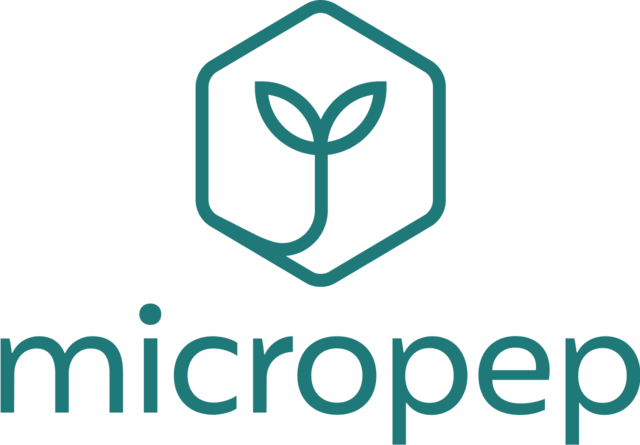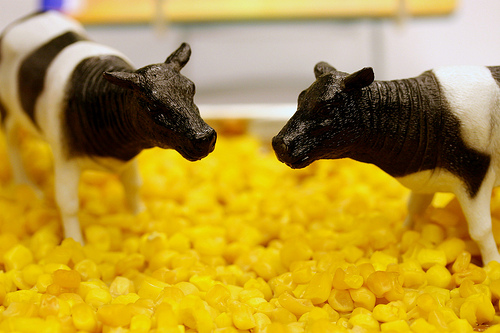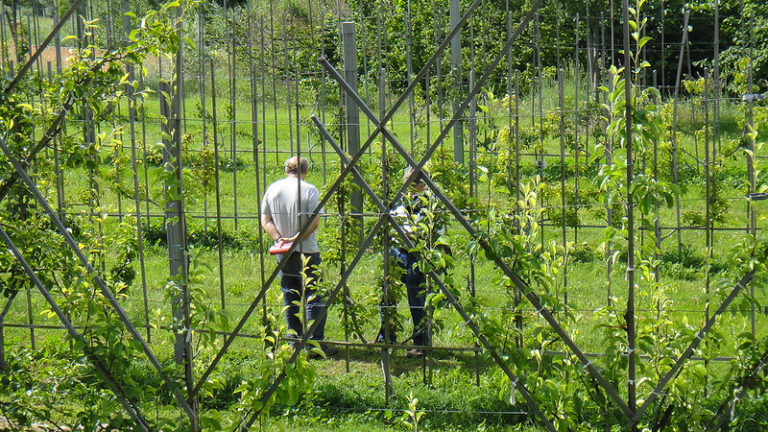Actualités
EU – New GMOs : a political report… under scientific camouflage

The Scientific Advice Mechanism (SAM) – a committee set up by the European Commission – published by the end of April 2017 a – more political than scientific – report on the “new GMOs”. Officially, this report is an “up-to-date” explanatory note on the issue for the European Commission. But, unofficially, it could well be used to prepare for a change of the “GMO” definition as it is currently underway in the United States. In full conflict with the Cartagena Protocol, however ratified by the EU.
On 28 April 2017, the Scientific Advice Mechanism [1] [2], a committee established by the European Commission in 2015, published its report on new genetic modification techniques, such as mutagenesis, CRISPR / cas9 etc [3]. A report drafted and published in six months on a complex issue which required several years of work for other experts committees, be they national [4] or european [5].
On 25 November 2016, the European Commission appointed the SAM to establish “an explanatory note on new techniques in agricultural biotechnology including their potential agricultural application in synthetic biology and for gene drive”. A note that was to include “the key characteristics of the various new techniques [and] overview on new techniques in agricultural biotechnology, whether ready to be used for commercial purposes or still at development stage” [6].
A classification of techniques … illegal and scientifically fuzzy
As a preamble, the reader is cautioned that “terms are used according to their scientific rather than legal meaning”. A warning however very approximate as the SAM worked with a classification of the techniques not only false on a legal point but also fuzzy on the scientific one, due to a lack of pre-established definitions and to many forgotten points.
Legally speaking, three categories arbitrarily established by the European Commission in its mandate to the SAM are considered : “conventional breeding techniques”, “established techniques of genetic modification” and “new breeding techniques”. However, some methods of mutagenesis (including mutagenesis induced by chemical or physical agents) fall into the category of conventional breeding techniques and not in the one of existing techniques of genetic modification. European legislation is however clear: mutagenesis, which causes genetic changes which are the mutations, produces GMOs (Directive 2001/18). This new classification laid down by the European Commission in its referral refers not to the legal and scientific definition of the EU but to a report by the European Food Safety Authority (EFSA) which itself refers to a report by the Wageningen’s University (The Netherlands). Thus, considering induced mutagenesis as a conventional technique was endorsed by the SAM (which could have discussed this consideration), which resulted in biased outcomes of the report.
It should also be noted that all over the 156 pages of the report, definitions may change. In that way, in the section on the history of evolution of plant breeding techniques, the wording of “new technique of genetic modification” applies with the arrival of transgenesis [7]. Yet, further on [8], genetic modifications of the 70-80s years are presented as concerning “the insertion of genetic information into an organism”, an ambiguous definition which may nevertheless be applied to all techniques, from mutagenesis to transgenesis via the cisgenesis and intragenesis. The report states, moreover, that “the most common existing genetic modification techniques […] employs recombinant nucleic acids”. The statement “the most common” inducing that the techniques of genetic modification are not limited to those using recombinant nucleic acids such as transgenesis. But innuendo after innuendo, even the report’s authors appear to be confusing…
Examples of uses? Fast and fairly vague
In order to answer the second question of the referral, the SAM is to provide examples of current or future commercial uses of the new techniques. One would have thus expected this “high level” mechanism to provide its mandatary, the European Commission and therefore the European citizens, with informations as detailed and exhaustive as that of the “description of techniques” part. However, on the plant part, the report just gives a few examples without mentioning their commercial interest or their socio-economic implications: for Crispr, a mushroom with delayed browning; for cisgenesis, a potato resistant to Phytophthora (late blight), and an apple scab resistant variety; for oligonucleotide-directed mutagenesis, an herbicide-resistant canola. Are also mentioned, without any reference to a technique: a soy modified for oil content, a potyvirus resistant cucumber, and finally a corn modified for its starch content. Examples that anyone can find on the Internet.
An asymmetrical and biased use of certain scientific findings
The report addresses a lot of scientific issues related to these techniques of genetic modification and to their implementation. But on one hand, the editorial style appears chosen to minimize several “problems” which will be as soon forgotten. On the other hand, this almost completeness disappears, in a critical inappropriate way, in the summary which is the part mainly read – if not the only one – by politicians. The report also refers to certain unintended effects linked to these new techniques, which are the subject of “much research at present” [9]. It also indicates the lack of control of the insertion sites of “genes” [10]; that genes or genetic modifications are inserted randomly inducing mutations or modification of other genes’ expression [11]; and that it is difficult to discard unintended effects even after more than 15 successive backcrosses [12] or to detect all mutations and epimutations by sequencing [13]. Other issues related to the implementation of related techniques to genetic modifications such as protoplasts’ cultivation and plants’ regeneration that cause both mutations and epimutations are also discussed [14] as well as issues related to CRISPR / nuclease technique requiring DNA integration into the genome, which increases the likelihood of off-target effects, or the use of RNA or nucleoprotein complexes contaminated with exogenous DNA [15]; or exchanges between rootstock and graft (ranging from small molecules such as RNAs, to DNA, all of which can be expressed in non-GM parts).
All these effects or limitations were already detailed by Inf’OGM in 2016 [16] [17]. But the SAM, despite this list of unintended, off-target effects, lack of mastery or the need to maintain scientific research, strongly suggests – while avoiding to conclude – a surprising solution: no longer consider the technique but only the final product for risk assessment.
So? Then only the final product should be taken into consideration.
Right from the summary, this approach to consider only the final products rather than the technique used is cleverly suggested [18]. The SAM explains in this summary that “Conclusions cannot be drawn about the absolute or comparative safety of techniques based on the predicted occurrence of unintended effects. An assessment of safety can only realistically be made on a case- by-case basis and depends on features of the end product”. It also paradoxically states that “It is not within the scope of the Note to assess the risks presented by individual end products” while explaining “that it is not expected that genetically and phenotypically similar products obtained by different techniques present significantly different risks”. A disturbing opinion especially as the SAM furthermore asserts that “possible hazards of end products of various breeding techniques depend on their specific features including the intended as well as unintended effects at genetic and phenotypic level” [19]. It is therefore suggested by the SAM that only final products should be considered for the risks’ assessments, regardless of the technique used, but contradictorily indicating that the potential hazards of a product depend on the technique used…
This view is also reflected in the section on gene drive. The SAM asserts that “Given the variety of ways gene drives could be applied, safety concerns need to be related to a specific product and cannot be realistically assessed in general terms”. Any scientific reference to support this statement? None as it is an undocumented opinion.
In many ways, the SAM report reminds the proposal currently discussed in the United States for changing the GMO definition [20]. But it should be noted above all that its suggestion to consider only the final product, and not the technique used, matches with the one of the Consultative Council of the Academies of European Sciences [21]. This network of Academies of science requests that products obtained through these new techniques – as long as they do not contain foreign DNA – should not be falling under the scope of the GMO legislation. A network that participated in… the SAM report.
The highlight, from detection to traceability
Considering what is at stake regarding transparency and information of producers and consumers, traceability as addressed by the SAM deserves our attention. Considering that new technologies give rise to GMOs falling under the scope of the legislation mean that modifications must be identifiable, detectable, traceable for the implementation of the related “GMO” labeling. Inf’OGM already explained that all the scientific evidences and experiences allow such traceability, provided that a research project is funded by the European Commission to establish the protocols, as it was done for transgenic plants in the late 1990s and early 2000s.
On that issue, the SAM report shows the same surprising ambiguity: it mentions all the scientific findings that make it possible to consider a traceability but refuses to conclude to its feasibility. The summary says explicitly: “The detection of changes made with any technique […] is possible with a variety of analytical methods, if detailed molecular information on the changes is available a priori”. Conclusion: without this prior information, detection is not possible. But scientists of INRA [22] and the ENGL network, hosted by the Joint Research Center in Ispra (Italy), an organ of the European Commission, showed that it was possible to detect unknown GMO (thus without prior notice) … So spot the deliberate mistake!
The SAM also states that it “is generally impossible to distinguish the cause of such changes as natural or resulting from the employment of any breeding technique”. A conclusion of the report yet contradicted by the scientific data provided in the same report. Indeed, the SAM does list the various off-target and / or unintended effects of the techniques themselves, the common steps of their implementation, and the characteristics of each technique … These are all elements that, in the context of a “matrix approach” for example, would provide elements of treacability, for the products mutated using in vivo and in vitro conditions, as for derivatives of the application of CRISPR –nucleases techniques for example. But all these elements are once again forgotten in the conclusion.
An example? The nuclease of the Crispr system requires a short anchoring sequence called PAM to enable the nuclease to modify a genetic sequence, which is explicitly acknowledged by the SAM. If, in a batch of similar plants, a mutation is frequently found in the close vicinity of a PAM sequence, one can expect that a CRISPR based technique was used instead that the mutation arose spontaneously, especially since it will be accompanied of several other mutations and epimutations (the unintentional effects). But the SAM does not say a word of this opportunity to combine signatures. Like the industries, the SAM considers that prior information is compulsory, otherwise, it is impossible to differentiate the origin of the modifications. Fortunately, Inra and ENGL scientists were not satisfied with this kind of approximation.
The SAM report: a scientific or political report?
The presence of opinions, of recommendations, of a content that is attempting to be exhaustive but asymmetrical in its conclusions … everything suggests that this report responds to a political rather than a scientific mandate.
First example: besides the illegal classification of techniques (previously discussed), the SAM addresses concepts that do not participate in legally defining a GMO. The table 3A deals with the “presence of exogenous DNA molecule” following the implementation of a technique of genetic modification. However, the legal definition of a GMO is in no way limited to this notion of the presence or absence of exogenous DNA. Not to mention that scientifically speaking, nucleic acid preparations (RNA) or laboratory or commercial proteins used in genetic modification protocol can be contaminated by exogenous DNA [23]. In the end, a legally ambiguous information and scientifically controversed…
Second example: the suggestions and opinions, embedded in this “scientific” report, suggest that the assertions are demonstrated, while other scientific papers prove the many difficulties routinely encountered in laboratories. It is stated that “in general the genome editing techniques show a much lower number or complete lack of unintended mutations as compared to organisms […] obtained via CBT [Conventional Breeding Techniques]” . Any scientific references in support to this statement? Not one… The “sound science”, which is meant to be the background of expertise, nevertheless implies to provide references in support of affirmative statements. Such references would have interested most of us in this case as in fact many unintentional effects are induced by the steps of implementation of the techniques of genetic modification, which the SAM itself quote to forget about it right after. The SAM specifies additionally that this absence of effects can “be checked by WGS [Whole Genome Sequencing] with some technical limitations”. These “technical limits”, referred to herein, are basically the inability of current whole sequencing to detect all mutations as explained by… the SAM itself!
Third example: for the oligonucleotide-directed mutagenesis, the SAM states that “because of the characteristics of this technique […] off-target effects are not expected” even though “no published data were found concerning the off-target rate for ODM” [24]. This paradox is surprising as this technique involves cell cultures which, as the SAM points out in other parts of its report, induces… unintended effects. But the SAM summarizes his scientific-political position by finally stating that “Off-target mutations of genome-edited plants are a matter of concern […] although this is much less an issue than with classical mutagenesis”. Any critical analysis of the literature? A single scientific reference? Nothing, except the trust that one wants to put in the faith of scientific experts…
Fourth and last example: the SAM considers that, whatever the technique used, “Where the resulting phenotype and use are comparable, it follows that the risks would be similar too” [25]. In addition to the vagueness of the term “comparable” and the use of the conditional tense, the SAM contradicts itself in the sentence following this latter by explaining that a “Particular consideration must be given to unintended effects at genetic and phenotypic level that may appear with any type of breeding technique […] All breeding techniques can produce variable frequencies and severities of unintended effects”. Hard to understand how it can provide such affirmation, scientifically and without any reference or explicit argumentation, that techniques inducing different unexpected effects will generate similar risks…
The SAM is a committee that delivers scientific advice of “high quality, timely and independent”, composed of seven members “highly qualified”. If the seven members of SAM have endorsed this report, it was written by three of them (Janusz Bujnicki, Pearl Dykstra and Henrik Wegener) who received external support. Among these external supports, one can distinguish Joachim Schiemann, former chairman of GMO Committee of the European Food Safety Authority (EFSA), co-founder and president of the International Society for Biosafety research (ISBR), with well-known pro-GMO position and conflicts of interest already pointed out by CEO and Inf’OGM [26] [27]. These external contributions were made in the framework of an official support provided by the European Academies for a scientific advice in politics (SAPEA). Network of networks, the SAPEA thus provided expertise and employees to support the SAM in its work. However, it does have within its “members” the Consultative Council of the Academies of European Sciences (EASAC) mentioned above for having taken a stand in favor of the deregulation of the products resulting from the new techniques of genetic modification. Coincidence or not, the SAM report, which will be presented by Janusz Bujnicki in Brussels on 28 September during a conference of the European Commission, is a good support of this position which will potentially require, according to the forthcoming decision of the Court of Justice of the European Union on that subject [28], to modify the legal definition of a GMO…
[4] The HCB in France has still not delivered its opinion.
[5] A dedicated European Committee of Experts worked on this subject between 2008 and 2012 but the report was never formally made public.
[6] SAM report, page 116
[7] SAM Report on page 24 and 25
[8] SAM Report, page 46
[9] SAM Report, page 18
[10] SAM Report, page 25
[11] SAM Report, page 51
[12] SAM Report, page 35
[13] SAM Report, page 35
[14] SAM Report, pages 51 and 65
[15] SAM Report, page 61
[18] SAM Report, page 18
[19] SAM Report, page 78
[22] http://www.inra.fr/Entreprises-Monde-agricole/Resultats-innovation-transfert/Toutes-les-actualites/Detecter-les-OGM-inconnus
[24] Report of SAM, page 57
[25] Report of SAM, page 79















